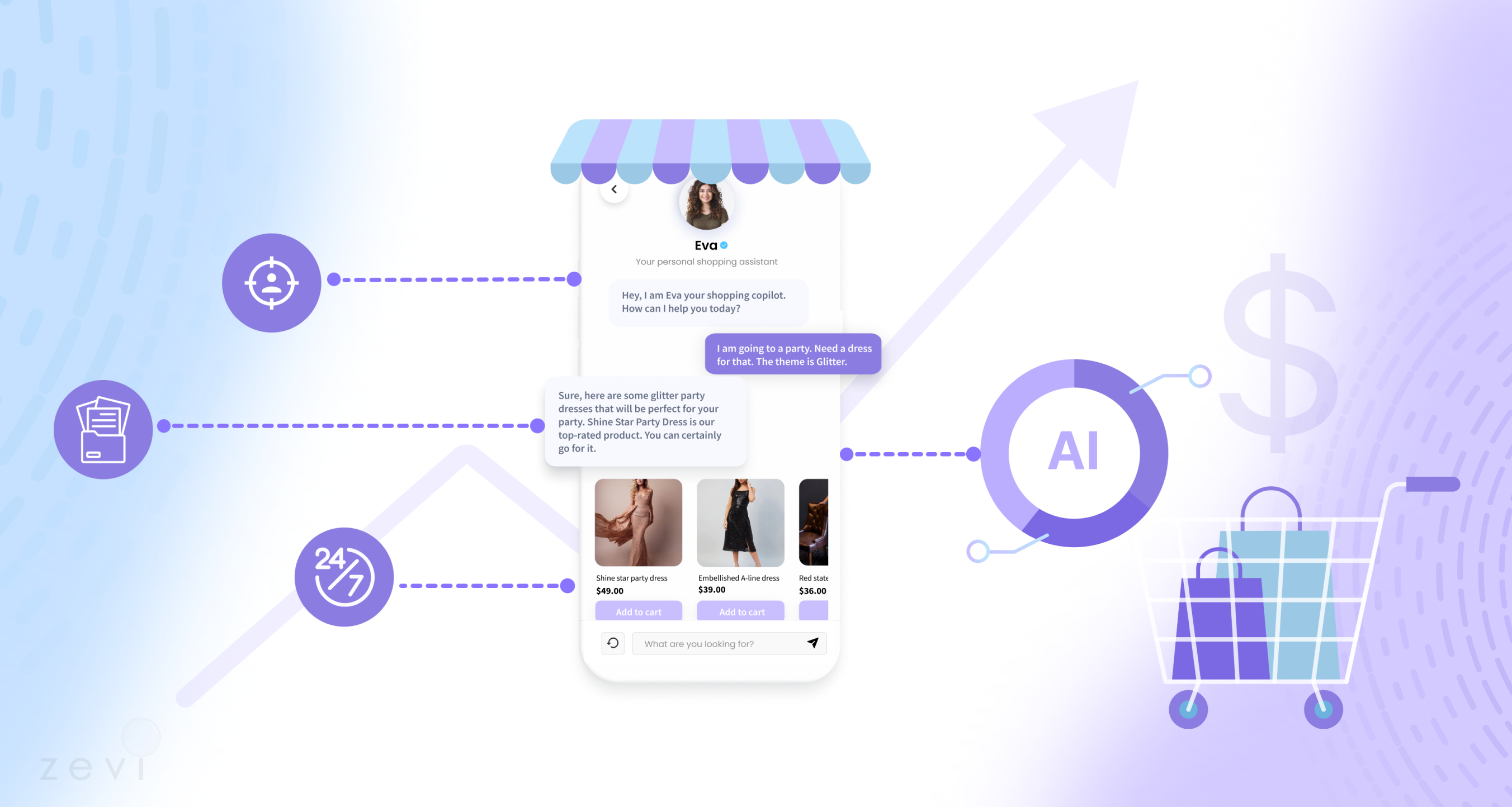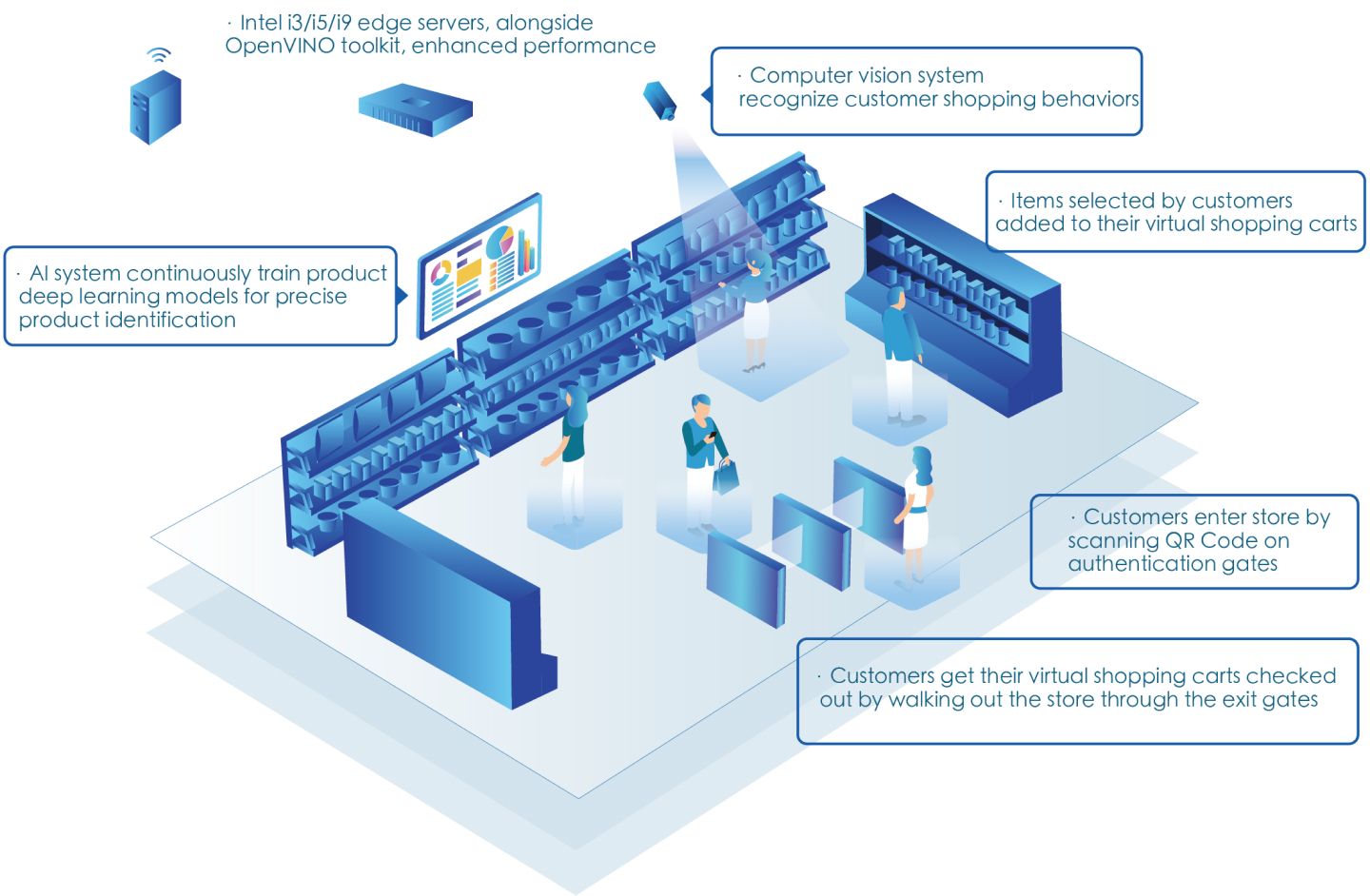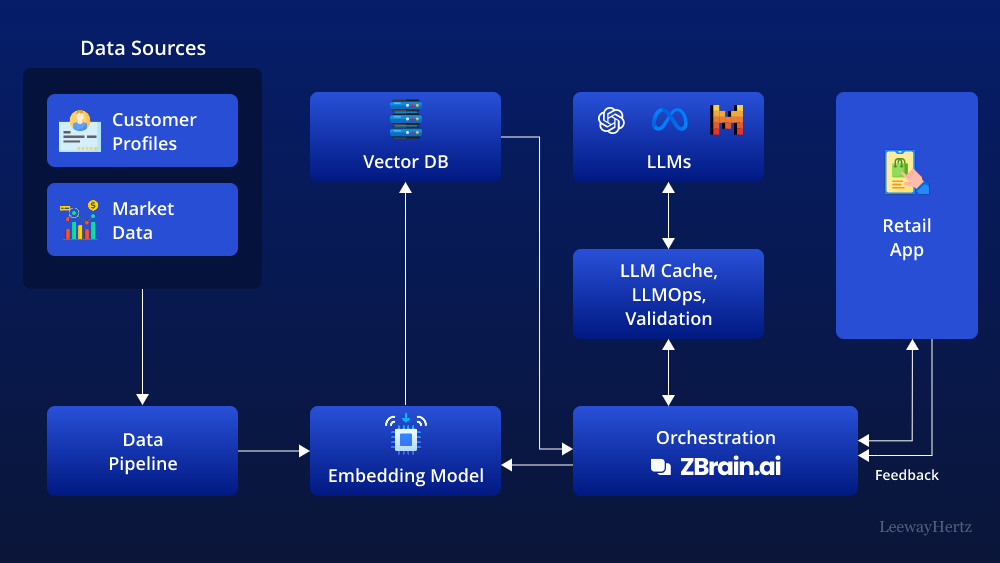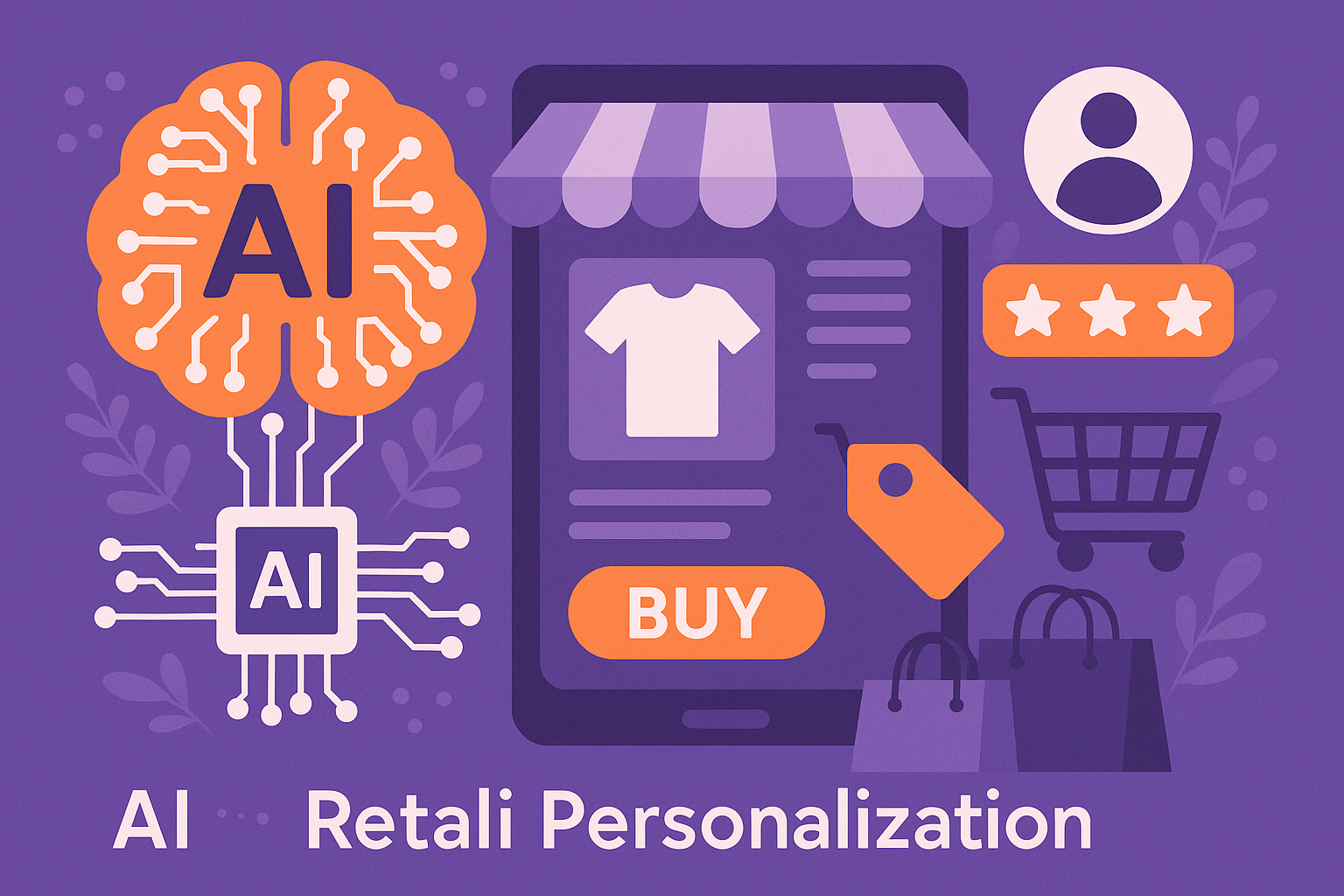The Personalization Revolution in Retail
The retail landscape is undergoing a seismic shift as AI-powered personalization transforms how brands interact with customers. In 2025, 89% of retailers have implemented AI-driven personalization strategies, up from just 15% in 2020 (McKinsey, 2025). This revolution is powered by advanced machine learning algorithms that analyze customer data in real-time, enabling hyper-personalized experiences that drive engagement and loyalty. The results speak for themselves: retailers leveraging AI personalization report a 25% increase in revenue and a 30% improvement in customer satisfaction (Forrester, 2025). This transformation is reshaping every aspect of the retail journey, from product discovery to post-purchase engagement.
Key statistics on AI personalization in retailSource: McKinsey: The Future of Personalization in Retail 2025
AI personalization boosts retail revenue by 25% (Forrester, 2025)
89% of retailers use AI for personalization (McKinsey, 2025)
Personalized recommendations drive 35% of e-commerce revenue (Bloomreach, 2025)
74% of consumers feel frustrated when content isn't personalized (Salesforce, 2025)
AI-Powered Product Recommendations
The next generation of product recommendation engines leverages deep learning to understand customer intent with unprecedented accuracy. Modern systems analyze over 200 data points per customer, including browsing behavior, purchase history, and even sentiment from customer service interactions. Amazon's latest recommendation engine, for example, uses transformer-based models that have increased click-through rates by 32% and average order value by 28% (Amazon, 2025). These sophisticated algorithms power various recommendation types, from 'complete the look' suggestions to 'frequently bought together' prompts, creating a seamless shopping experience that feels tailored to each individual.

AI-powered product recommendation engine in actionSource: Amazon Science: Advances in Recommendation Systems 2025
AI recommendations increase conversion rates by 5-15% (Gartner, 2025)
Personalized product discovery boosts revenue by 35% (Bloomreach, 2025)
Visual search improves conversion rates by 30% (ViSenze, 2025)
AI-powered search increases revenue per visit by 216% (Algolia, 2025)
Dynamic Pricing and Inventory Optimization
AI is revolutionizing pricing strategies through dynamic pricing algorithms that adjust in real-time based on demand, inventory levels, and competitor pricing. These systems analyze billions of data points daily, enabling retailers to optimize prices with surgical precision. Walmart's AI-powered pricing engine, for instance, makes over 2.5 million price adjustments daily, resulting in a 10% increase in gross margin (Walmart, 2025). Similarly, inventory optimization algorithms predict demand with 95% accuracy, reducing stockouts by 50% and excess inventory by 30%. This level of precision ensures that the right products are in the right place at the right time, maximizing both sales and customer satisfaction.

AI-powered dynamic pricing dashboardSource: BCG: The Future of Retail Pricing 2025
Dynamic pricing increases margins by 5-10% (BCG, 2025)
AI reduces inventory costs by 20-50% (McKinsey, 2025)
Demand forecasting accuracy reaches 95% (Gartner, 2025)
Automated replenishment reduces stockouts by 50% (Retail TouchPoints, 2025)
Conversational Commerce and AI Assistants
The rize of conversational AI has transformed customer service and sales in retail. Today's AI assistants can handle 80% of customer inquiries with human-level accuracy, reducing response times from hours to seconds. Sephora's AI-powered virtual artist, for example, has increased conversion rates by 85% by allowing customers to try on makeup virtually (LVMH, 2025). Meanwhile, voice commerce is expected to reach $55 billion by 2026, with smart speakers becoming a primary shopping channel for 25% of households (Juniper Research, 2025). These AI assistants leverage natural language processing and computer vision to provide personalized recommendations, answer questions, and even complete purchases within the conversation.

AI-powered virtual assistant helping customer with product selectionSource: CrossML: The Future of AI Virtual Assistants in Retail
AI chatbots handle 80% of customer service inquiries (Gartner, 2025)
Voice commerce to reach $55B by 2026 (Juniper Research, 2025)
Virtual try-ons increase conversion by 85% (LVMH, 2025)
AI assistants reduce customer service costs by 30% (Deloitte, 2025)
Computer Vision and Smart Stores
Brick-and-mortar stores are being transformed by computer vision and IoT technologies, creating seamless omnichannel experiences. Amazon Go's cashier-less stores, which use hundreds of cameras and sensors to track purchases, have reduced checkout times by 90% and increased store efficiency by 40% (Amazon, 2025). Meanwhile, smart shelves equipped with weight sensors and RFID tags automatically update inventory levels in real-time, while computer vision analyzes customer behavior to optimize store layouts. These technologies are bridging the gap between online and offline retail, creating a unified shopping experience that meets customers wherever they are.

Computer vision system in a smart retail storeSource: Intel RealSense: Computer Vision AI for Smart Retail Stores
Cashier-less stores reduce checkout times by 90% (Amazon, 2025)
Smart shelves reduce inventory discrepancies by 80% (Retail TouchPoints, 2025)
Computer vision increases in-store conversion by 25% (NVIDIA, 2025)
AI-powered loss prevention saves retailers $100B annually (NRF, 2025)
The Future of AI in Retail
As we look ahead, the integration of AI in retail will become even more sophisticated and pervasive. The next frontier includes the development of emotion-sensing AI that can detect customer mood and adjust interactions accordingly, as well as the rize of the metaverse as a new retail channel. Blockchain technology will enable greater transparency in supply chains, while AI-powered sustainability tools will help retailers reduce waste and carbon emissions. The retailers that will thrive in this new era are those that view AI not just as a tool, but as a fundamental part of their business strategy, creating seamless, personalized experiences that delight customers at every touchpoint.

Future of AI in retail with metaverse and emotion-sensing AISource: LEEWAYHERTZ: AI in Retail
AI in retail market to reach $45B by 2030 (Grand View Research, 2025)
Metaverse commerce to reach $800B by 2028 (Citi, 2025)
AI reduces retail carbon footprint by 30% (WEF, 2025)
85% of customer interactions will be AI-managed by 2026 (Gartner, 2025)
References
McKinsey & Company. (2025). The Future of Personalization in Retail.
Forrester Research. (2025). AI Personalization in Retail: Key Trends and Best Practices.
Gartner. (2025). Hype Cycle for Retail Technologies.
Amazon Science. (2025). Advances in Recommendation Systems.
Boston Consulting Group. (2025). The Future of Retail Pricing.
Juniper Research. (2025). Conversational Commerce: Market Forecasts & Opportunities.
National Retail Federation. (2025). Retail's Digital Transformation.
World Economic Forum. (2025). The Future of Retail 2025.
Bloomreach. (2025). The State of Commerce Experience.
Deloitte. (2025). Global Powers of Retailing 2025.
Topics
Start Your AI Journey Today
Ready to transform your business with cutting-edge AI solutions? Contact our team of experts to discuss your project.
Schedule a Consultation